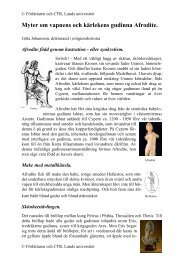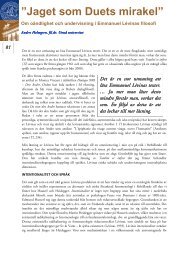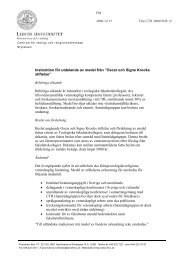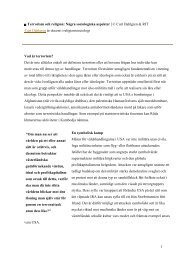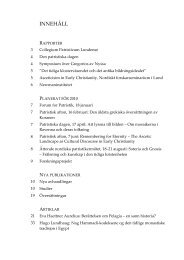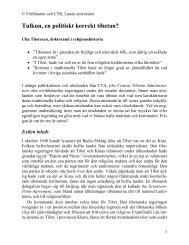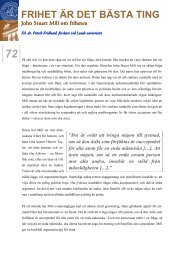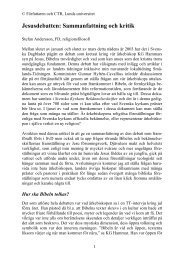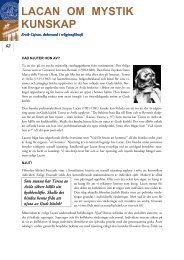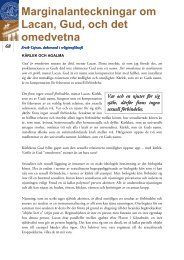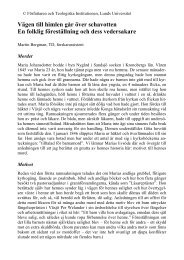Meddelanden 25 (2010) (PDF 2.0 MB - Nytt fönster) - Centrum för ...
Meddelanden 25 (2010) (PDF 2.0 MB - Nytt fönster) - Centrum för ...
Meddelanden 25 (2010) (PDF 2.0 MB - Nytt fönster) - Centrum för ...
You also want an ePaper? Increase the reach of your titles
YUMPU automatically turns print PDFs into web optimized ePapers that Google loves.
SOME REFLECTIONS ON THE NAG HAMMADI CODICES<br />
AND THE STUDY OF EARLY EGYPTIAN MONASTICISM *<br />
James E. Goehring<br />
My interest in the Pachomian monastic movement is, I think, fairly well<br />
known. It had its origins in an interest in the heterodox collection of texts<br />
from Nag Hammadi to which I was first introduced as an undergraduate at<br />
the University of California in Berkeley in 1971. While I was drawn into the<br />
early speculation over a possible relationship between the Pachomians and<br />
the codices, I soon realized that we first needed to better understand the<br />
Pachomians and the nature of the Pachomian dossier. Hence I left the Nag<br />
Hammadi codices behind to work on the Pachomian monastic movement,<br />
and my dissertation focused on the Letter of Ammon. 1 While my own career<br />
has taken me away from both at times, particularly with respect to an interest<br />
in the documentary evidence of early Egyptian monasticism and the<br />
issue of the desert as a literary landscape, the Nag Hammadi codices and the<br />
Pachomians have never been far from my mind. More recently, I have been<br />
involved with the latter days of the Pachomian federation in the sixth century;<br />
while origins may be more interesting, the end of a movement has its<br />
own intrigue and impact. But that is another story. Here I would like to<br />
return to the Nag Hammadi codices and offer a few reflections on the debate<br />
that has swirled around them and their relationship to early Christian<br />
monasticism. I am interested not simply in the history of the debate, but in<br />
reflecting on where we now stand and where I think the future lies.<br />
Initial reaction: ”they cannot have been monks”<br />
Initially, the overtly so-called “Gnostic” texts preserved in the Nag Hammadi<br />
codices identified the entire collection as Gnostic; hence the title of Jean<br />
* These reflections were originally composed to initiate discussion in a seminar on Nag<br />
Hammadi and Early Christian Asceticism organized by Samuel Rubenson at Lund<br />
University on June 8, <strong>2010</strong>. Participants included Samuel and the members of his research<br />
group on “Early Monasticism and Classical Paideia.” I thank them one and all for a lively,<br />
enjoyable discussion.<br />
1 James E. Goehring, The Letter of Ammon and Pachomian Monasticism (PTS 27; Berlin and<br />
New York: Walter de Gruyter, 1986).<br />
∙ 61 ∙



